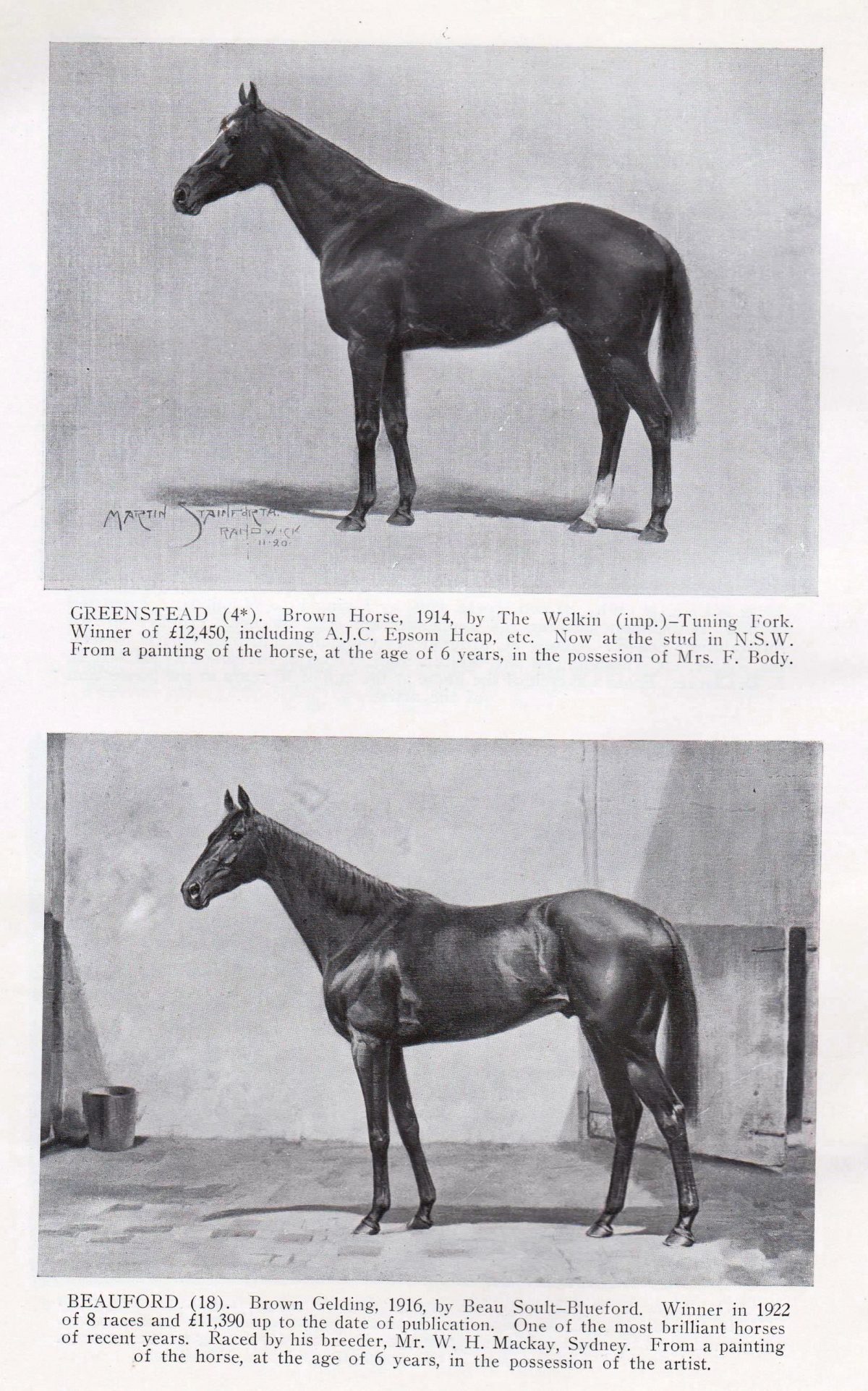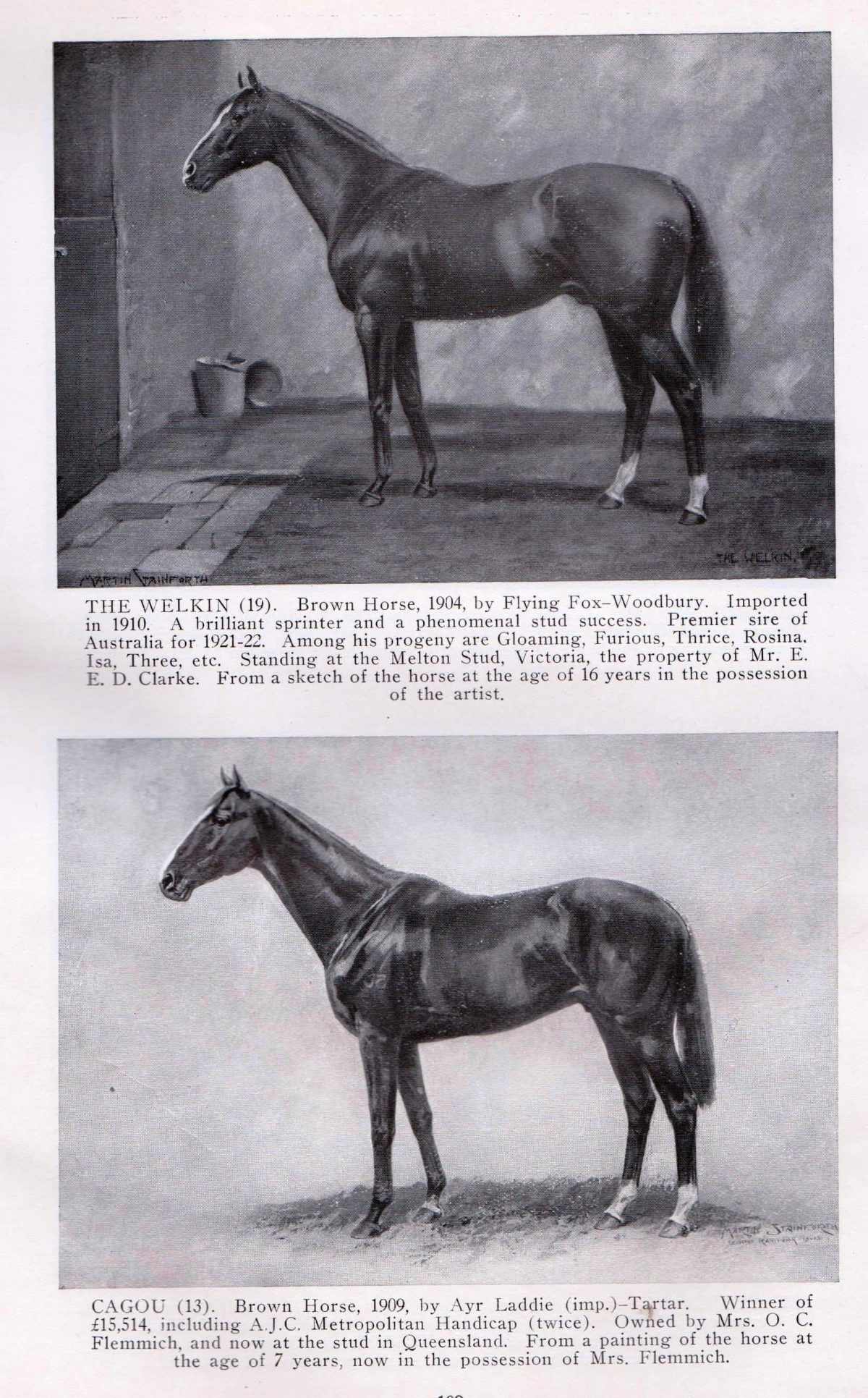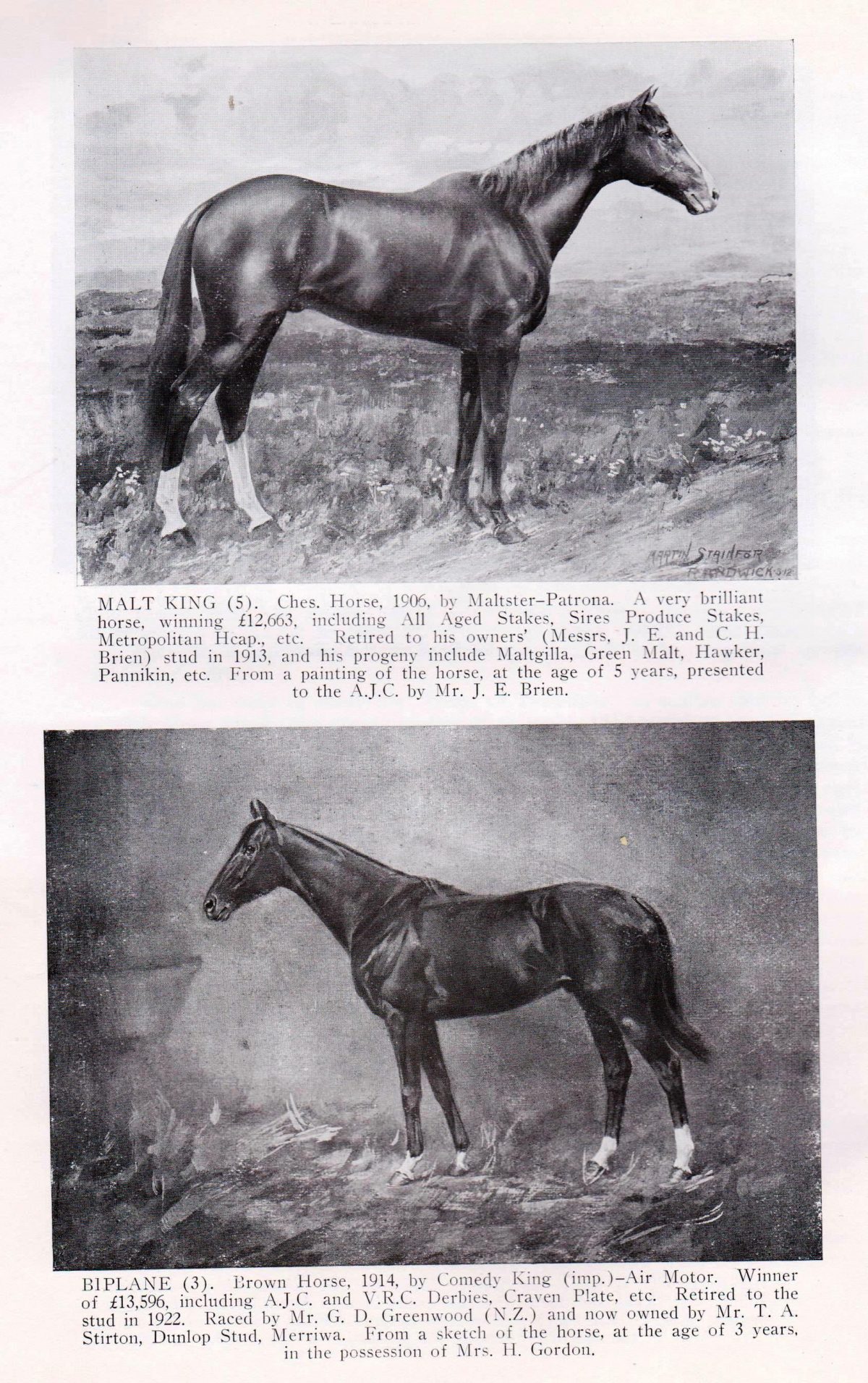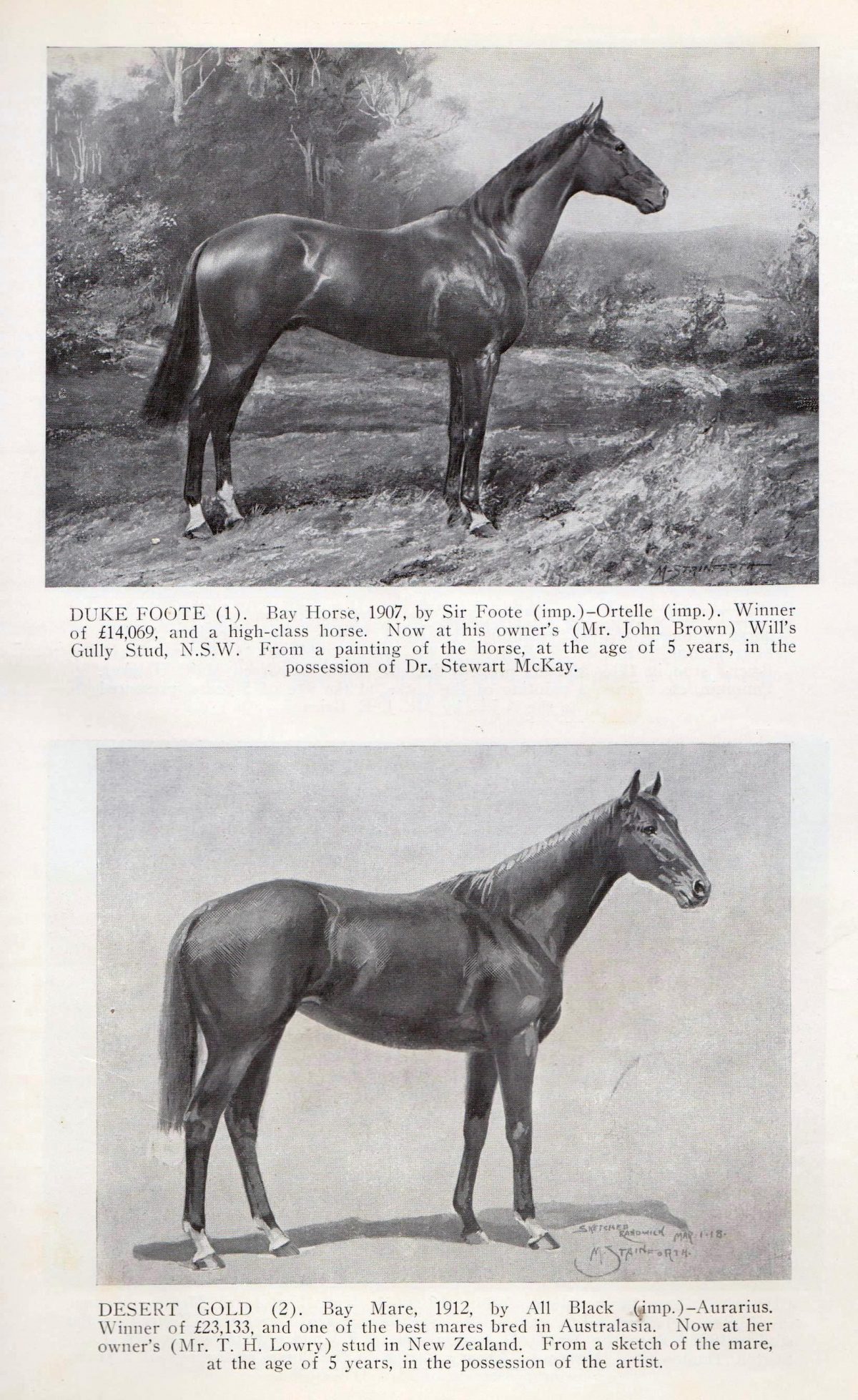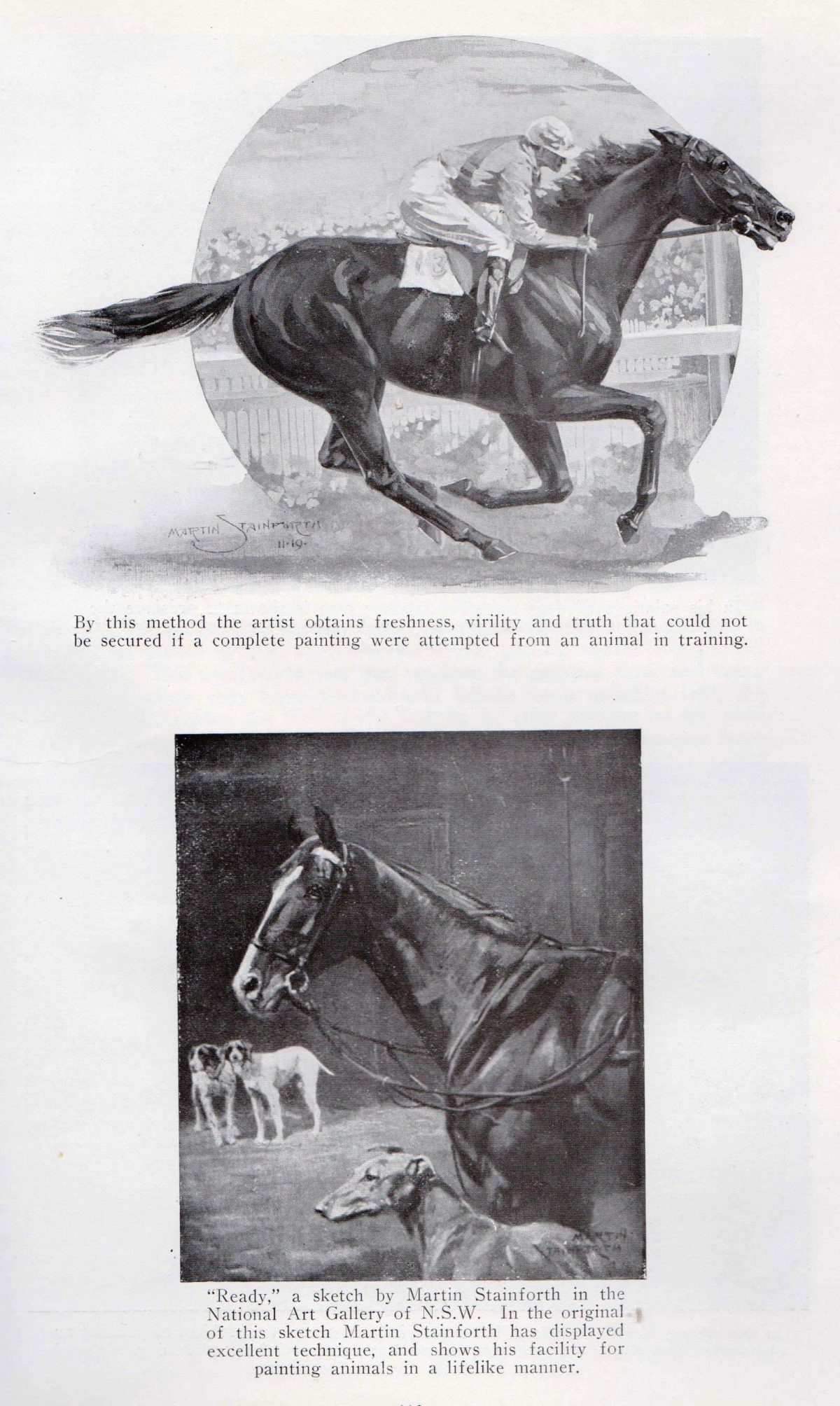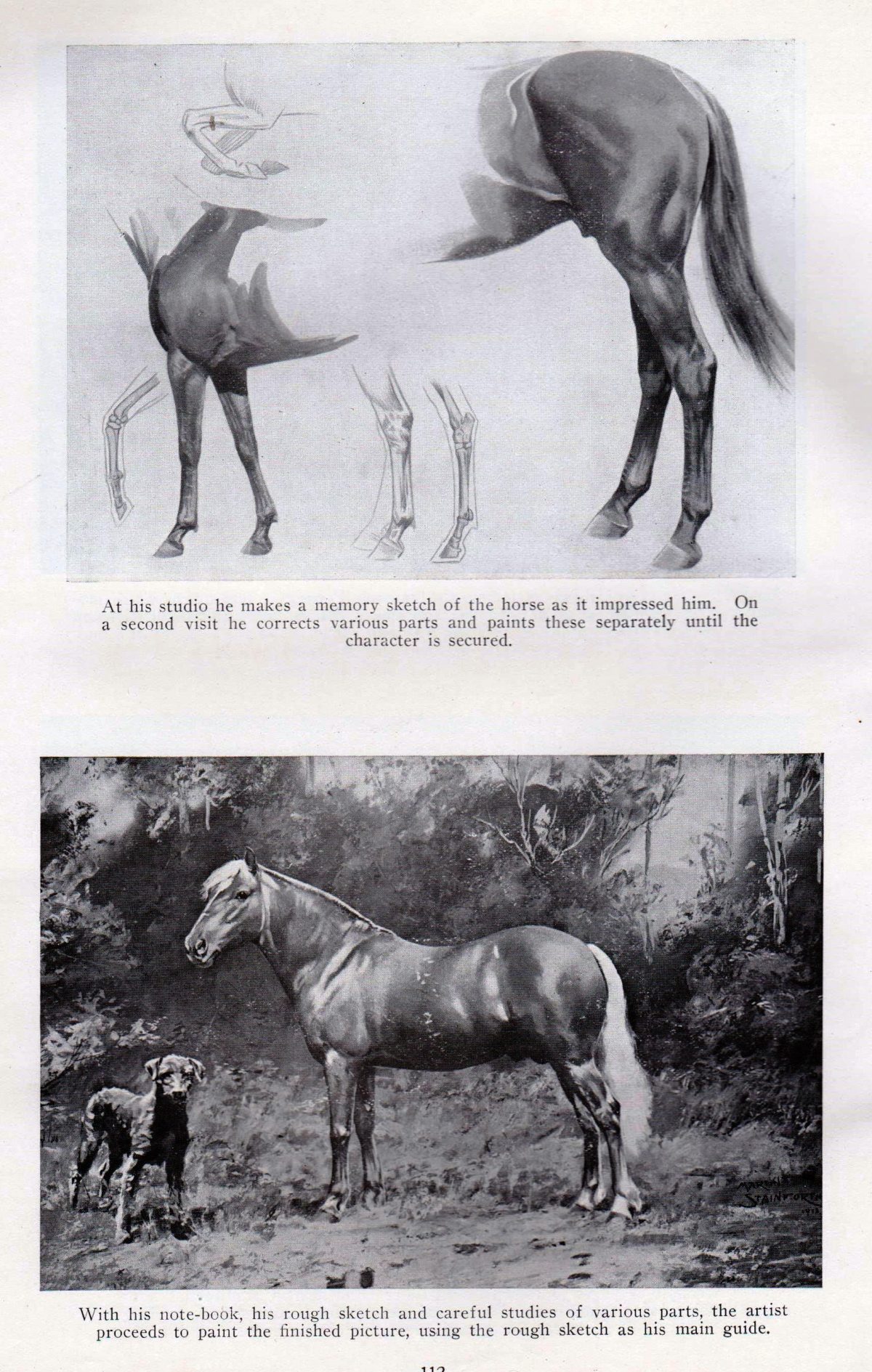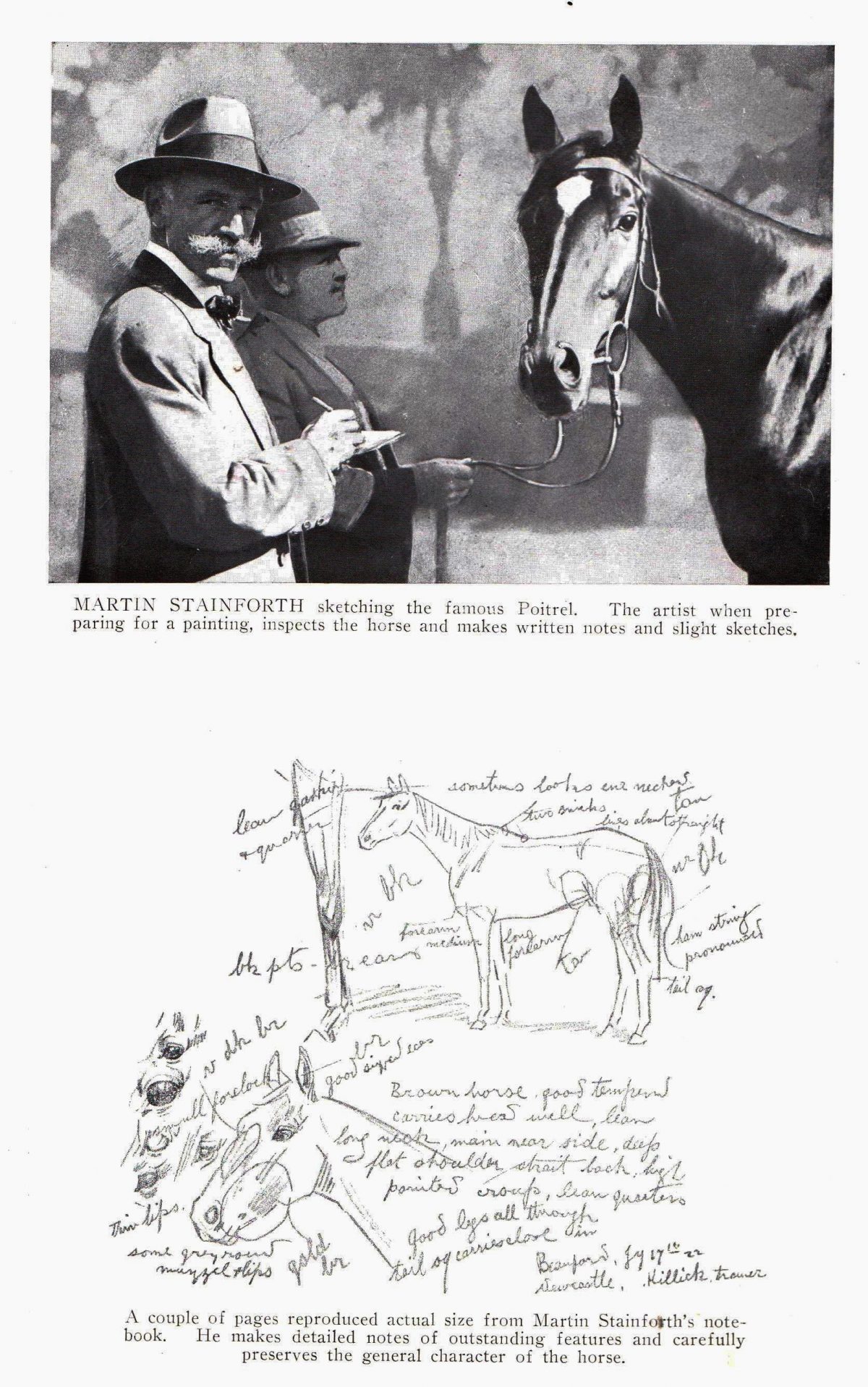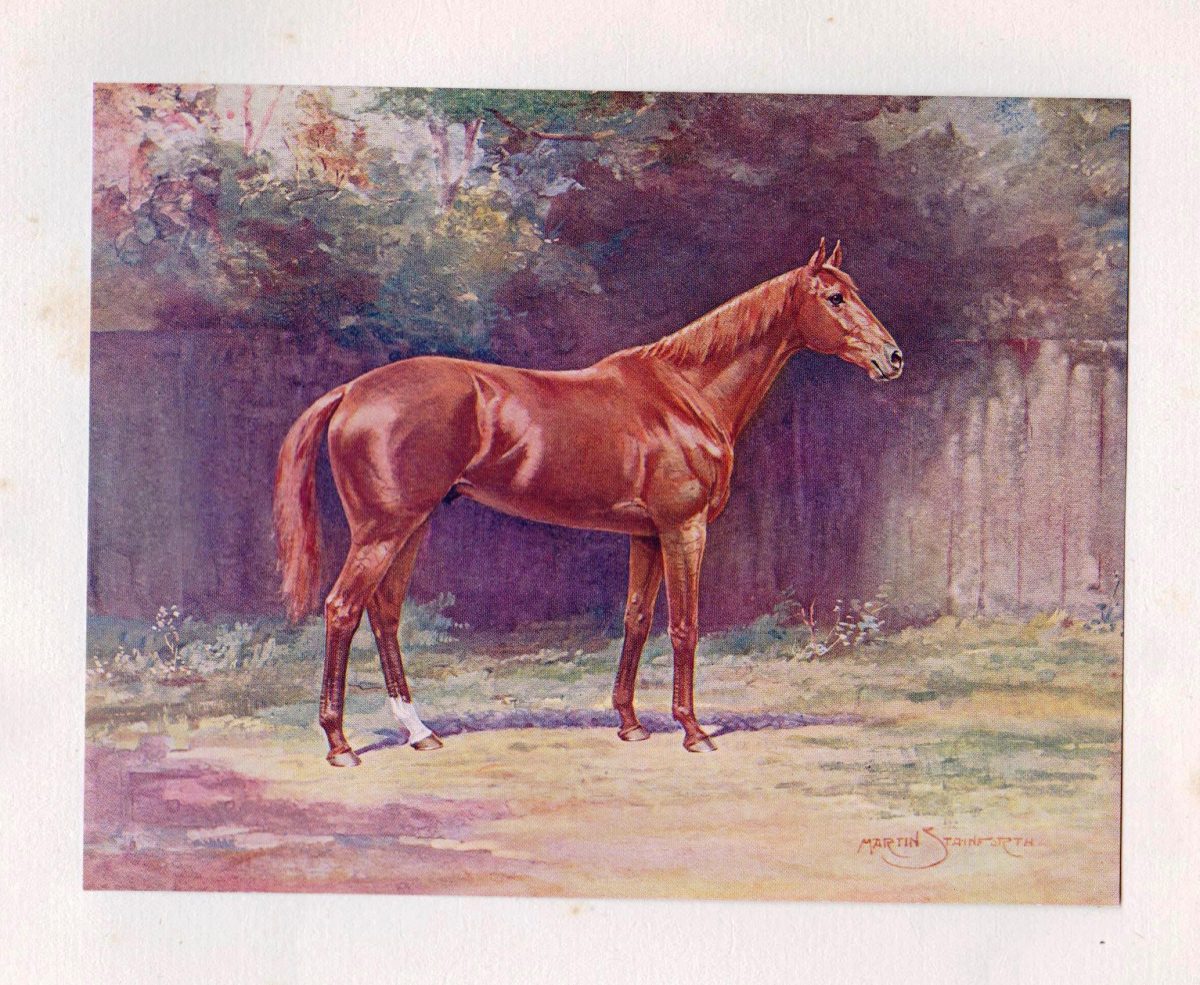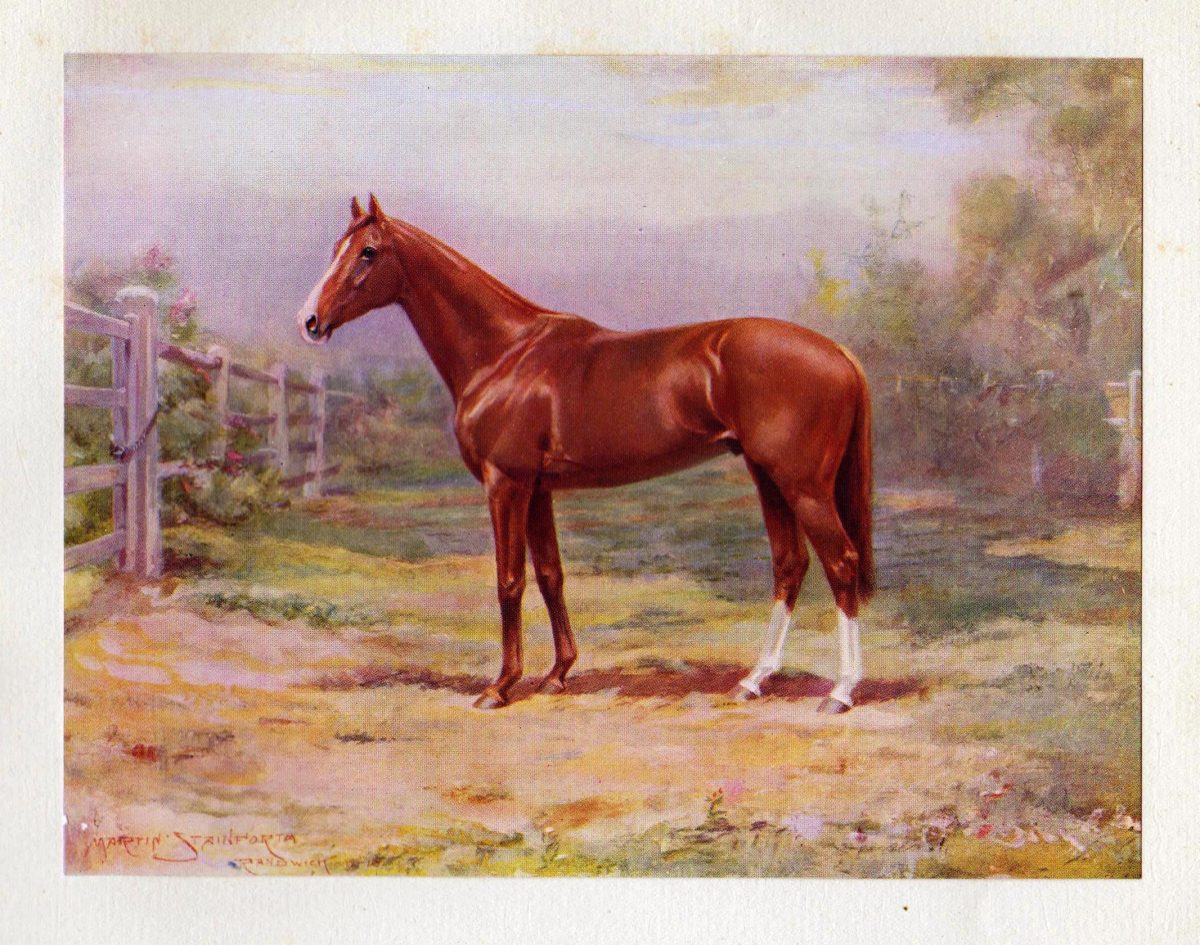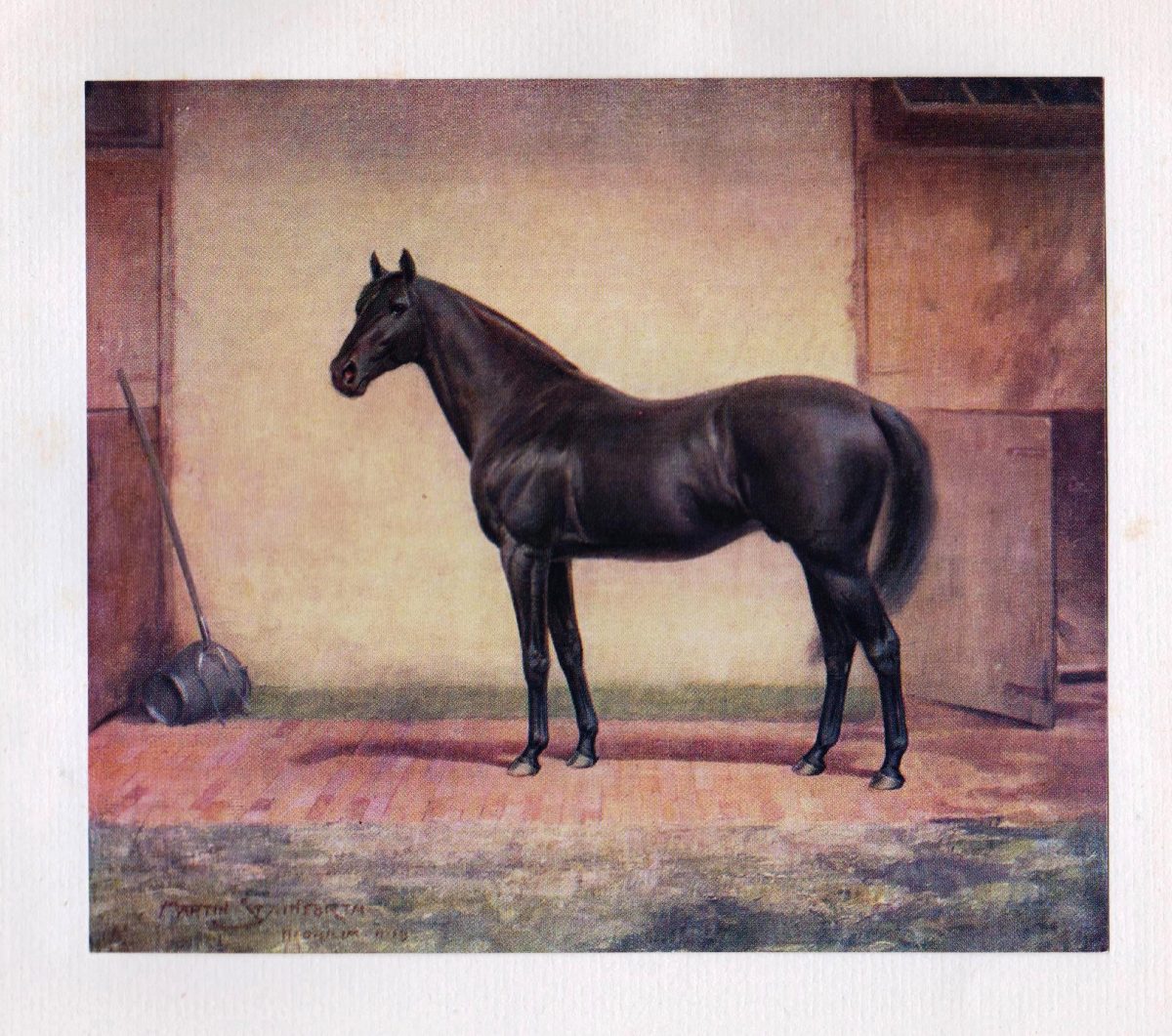Martin Stainforth: Greenstead & Beauford
“Next to a fine picture of a lovely woman there is nothing perhaps which more strongly appeals to the aesthetic sense than a picture of a splendid thoroughbred horse”.
So wrote Dr W. J. Stewart McKay in his seminal treatise: ‘Racehorses in Australia’ with paintings by Martin Stainforth and Edited by Dr W. H. Lang, Ken Austin and Dr Stewart Mckay.
Dr McKay describes a very talented and gifted artist in his lavish encomium: ‘Martin Stainforth: An Appreciation’. An Englishman by birth Martin Stainforth settled in Australia. Visiting English critic Aylyng Arnold, who from 1906 to 1910 was special correspondent for the “London Sporting Life” wrote in 2015 on a visit to Melbourne: “I can confidently say I have seen as many portraits of horses as falls to the lot of any one man, but never have I seen anything approaching yours”.
Certainly Dr McKay agreed noting his expert methods and attention to fine detail. Martin Stainforth certainly perfected the finer points of sketching horses and turning these into exquisite paintings. This was the cutting edge technology of its day pre-dating the emergence of photography as the popular medium.
I will feature more of Martin Stainforth’s work in this record. He must have spent a lot of time in the Hunter Valley at both Arrowfield (Moses Brothers) and Widden (Thompson Family). Their great stallions are captured for posterity by his superlative animal art.










